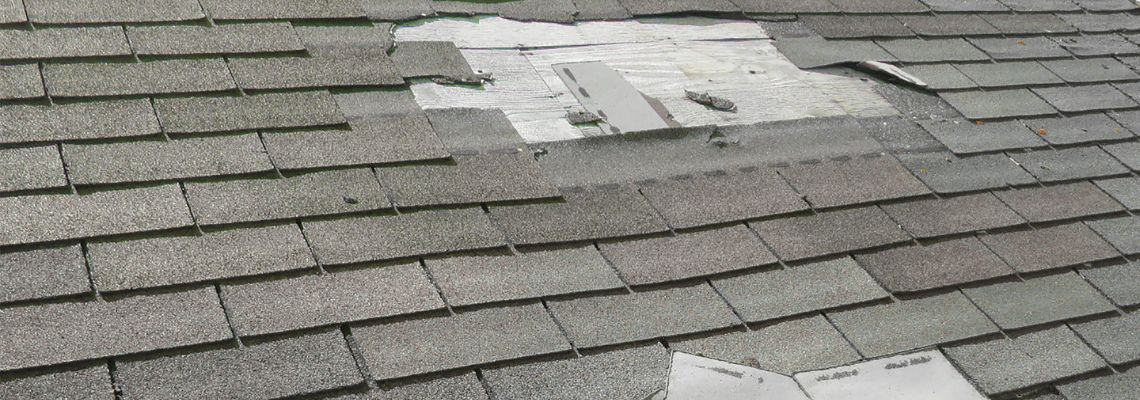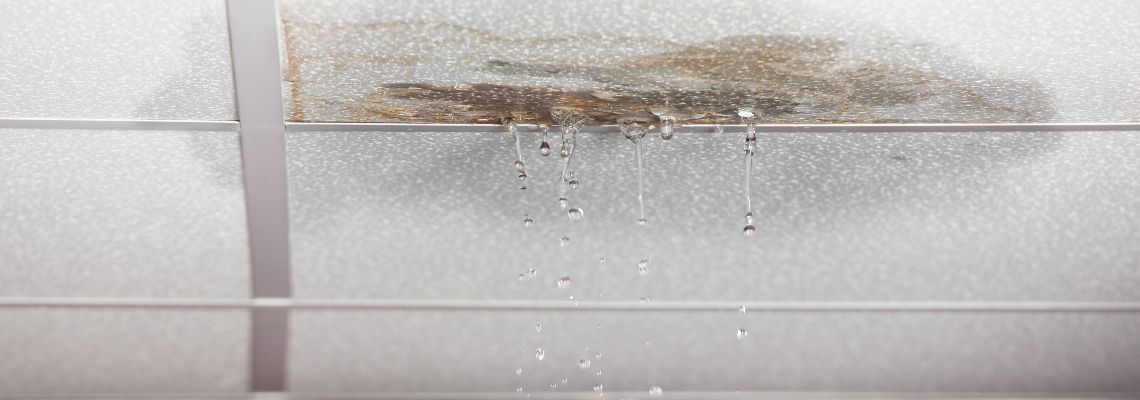7 Signs of Wind Damage to Your Roof
Your roof is like a shield for your home, protecting it from the harsh elements outside. It keeps you safe from the blazing hot sun in summer, the pouring rain in winter, and even from hailstorms. But what about something seemingly harmless: wind? While often underestimated, wind can inflict significant damage on your roof, even before reaching hurricane or tornado force. Recognizing the signs of wind damage to roofs is crucial for ensuring its longevity and your safety.
This blog post is here to help homeowners like you understand the signs of wind damage that often go unnoticed. By learning about these signs, you can take action early to keep your home safe and avoid expensive repairs. We’ll explore these signs in simple terms, so you can easily understand how to protect your home from the sneaky damage that wind can cause. So let’s get started and discover how to recognize signs of wind damage and safeguard your home!
How Wind Interacts with the Roofs
Understanding how wind interacts with roofs is crucial in identifying clear signs of roof wind damage. Wind behavior is dynamic and influenced by various factors, such as topography, terrain features, and atmospheric conditions.
When wind flows over a roof, it creates different pressure zones. One of the notable effects is negative pressure or suction, which occurs as the wind moves across the roof surface. The suction pressure can lift shingles from the roof deck, exposing the underlying structure to potential water infiltration and other forms of damage. This lifting action is a primary mechanism behind roof damage during windy conditions.
Furthermore, when the wind strikes the side of a home, it is forced upward and over the roof. This generates uplift pressure, which varies in intensity across different parts of the roof. The corners of the roofline typically experience the highest uplift pressure, where the wind meets the edges of the roof at an angle. Additionally, the edges of the roof, including the eaves and rakes, are subjected to significant pressure. These areas are particularly vulnerable to wind-related damage, as the force exerted by the wind can cause shingles to lift, bend, or even tear away.

Clear Signs of Wind Damage To Roof
Here are some clear indicators of wind damage to your roof that you should be on the lookout for:
1. Damaged Shingles
The presence of missing or flapping shingles is one of the most obvious signs of wind damage to a roof. After a windy storm, this apparent damage is frequently the first thing residents see. Because asphalt shingles are the most common type of roofing material, they are particularly prone to powerful winds.
When heavy winds hit your property, they can grasp shingles and forcefully tear them from the roof structure. While this phenomenon is more common on older roofs with loose shingles, it is important to note that strong wind gusts can damage even modern, well-maintained roofs.
If you notice peeling shingles, visible missing material, or other damage, your roof’s safety may be compromised. These signs not only indicate immediate wind damage but also potential weaknesses that might worsen with following storms. As a result, timely inspection and repair are essential to maintaining the structural integrity and durability of your roof.
2. Granule Erosion
Granules on your shingles help protect your roof from getting too much sun. If you start seeing horizontal lines that look like bare spots or cracks, that’s a sign the wind might have damaged your roof. When the wind blows, it can make shingles rub against each other, causing those granules to come off.
When wind hits your roof hard, it can make tiny pieces called granules fall off from your shingles. Usually, as roofs get older, they naturally lose some of these granules, which isn’t usually a big deal. But if you notice a lot of granules disappearing all at once or over time, it’s a problem.
Losing these granules leaves your shingles more vulnerable to the sun’s rays, which can make them crack or curl up. While some cases of granule loss might not need much fixing, ignoring it could lead to bigger issues like leaks or more expensive repairs later on. So, if you spot signs of granule loss, it’s best to get it checked out and fixed sooner rather than later to keep your roof strong and your home safe.
3. Leaking Roof

If you’re looking for signs of roof wind damage, keep an eye out for water stains and leaks inside your home. After a big windstorm, it’s crucial to check indoors for any signs of water sneaking in. Damaged shingles can create openings for water to seep through, causing problems in your ceilings and attic.
So, if you spot wet spots, leaks, or any other signs of water damage on your walls or ceiling, it’s a strong indicator that your roof might have been affected by the wind. It’s essential to act fast because these issues can lead to serious problems like structural damage and mold growth, which could be harmful to your health.
Taking care of leaks and water stains quickly can stop them from getting worse and causing more damage to your home’s interior, electrical system, and insulation. To ensure the safety of your home and avoid costly repairs, it’s wise to call in professional roofing contractors who can assess the damage and make the necessary repairs.
4. Debris Accumulation
Noticing a bunch of tree branches, leaves, or scattered trash in your yard and around your house is a clear indication that strong winds have recently occurred. However, aside from being an annoyance to clean up, this debris could also indicate potential roof damage.
It is important to take a closer look at your roof if you see any debris buildup, especially after a windy day. During the storm, branches or other objects may have landed on your roof, which can cause structural damage or puncture the roofing material.
Even if the debris seems harmless, it’s crucial to investigate further. Accumulated debris could obstruct drainage systems, resulting in water pooling on your roof and potentially causing leaks or other water-related damage.
Therefore, it’s essential not to overlook the significance of debris accumulation around your home. It serves as a visual cue to inspect your roof for any signs of wind damage, ensuring that any issues are addressed promptly to preserve the integrity of your roof and prevent further problems in the future.
5. Lifted Flashing and Vent Covers
When strong winds hit, they can lift and loosen the metal strips called flashing around things that stick out of your roof, like chimneys, vents, and skylights. This creates openings where rainwater can sneak in, causing leaks inside your home.
If you see that the flashing or covers on your roof’s vents look lifted or out of place, it’s important to act fast. These parts help keep your roof sealed and protected from water. So, it’s essential to check them carefully for any signs of damage or if they’ve been moved by the wind.
Make sure to inspect other roof accessories like vent covers and turbines too. If you find any issues, getting them fixed quickly can stop water from getting into your home and causing more significant problems later on. So, keep an eye out for lifted flashing and vent covers after a windy day and take action to keep your home dry and safe.
6. Bent Gutters and Downspouts
Dented or bent gutters and downspouts serve as clear indicators of potential wind damage. Particularly during strong wind events accompanied by hail, these essential components of the roofing system may sustain structural deformation. Such damage can significantly impair their ability to effectively channel rainwater away from the property, thereby compromising proper drainage.
It is imperative to conduct a thorough inspection of the gutters and downspouts for any signs of such damage. Recognizing that these elements are part of the roof’s overall functionality, their condition can offer insights into the potential impact of the wind on the roofing structure itself.
In the event of observing dented or bent gutters and downspouts, it is prudent to extend the assessment to the roof. This proactive approach allows for a comprehensive understanding of the extent of the wind’s impact, facilitating timely intervention to address any potential roofing issues that may have arisen.
7. Roof Sagging

A sagging roof is a significant concern that indicates potential wind damage and underlying structural problems that require immediate attention. When a roof faces forceful winds, its integrity may be compromised, leading to visible signs of sagging or bowing.
A sagging roof signifies a significant weakening of the roof’s supporting structure, which poses risks to the safety and stability of the building. Roof sagging may result from factors such as water intrusion, decay, or inadequate structural support in addition to wind damage.
Homeowners should prioritize addressing a sagging roof by seeking professional inspection and intervention. Timely action is essential to prevent further structural deterioration, mitigate safety risks, and avoid escalating repair costs.
As a result, while examining signs of roof wind damage, the existence of a drooping roof requires immediate and quick action. This highlights the significance of quickly fixing any basic flaws in order to maintain the building’s structural integrity.
Conclusion:
When it comes to safeguarding your home from the elements, particularly the damaging effects of wind on your roof, proactive measures and professional expertise are essential. Understanding how wind interacts with roofs and recognizing the clear signs of wind damage are crucial steps in protecting your property’s structural integrity.
At NexLevel Roofing and Outdoor Living, we specialize in providing comprehensive roofing solutions, from new construction projects to re-roofs and repairs. Our team of experienced professionals is dedicated to delivering exceptional service and craftsmanship, ensuring that your roof withstands the test of time and weather.
Whether you need a roof inspection, repair, or replacement, you can trust NexLevel Roofing and Outdoor Living to deliver top-quality results. Contact us today at 972-346-6432 or email us at info@nex-level.net to schedule a consultation and experience the difference our expertise can make in protecting and enhancing your home. With NexLevel Roofing and Outdoor Living, your roof is in capable hands.
Ready to Elevate Your Space? Let's Talk!
Experience unmatched quality and craftsmanship in the heart of Texas. At NexLevel, we specialize in transforming homes with precision roofing and bespoke outdoor living spaces. Our dedicated team combines years of expertise with top-tier materials to deliver results that not only meet but exceed expectations. Whether you’re envisioning a cozy fire pit for chilly evenings or a resilient roof to protect your home, NexLevel is your trusted partner. Dive into a world of possibilities and let us bring your vision to life.

